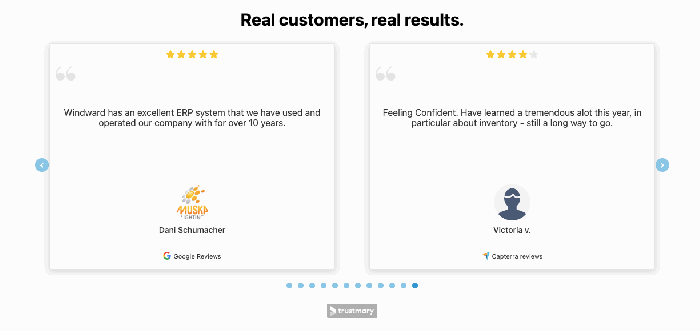Using Testimonials in Marketing is all about showcasing real customer experiences to establish trust and credibility in your brand. Imagine a world where customer feedback drives your marketing efforts, influencing consumer behavior and boosting sales.
In this guide, we’ll explore the power of testimonials and how businesses can leverage them to connect with their audience on a deeper level.
Introduction to Using Testimonials in Marketing

Testimonials play a crucial role in marketing strategies by showcasing positive experiences and feedback from satisfied customers. They help build credibility and trust with potential customers who are considering a purchase. Companies can effectively use testimonials in their marketing campaigns to establish social proof and encourage others to make a buying decision based on the positive experiences of others.
Examples of Companies Using Testimonials
- Amazon: Amazon includes customer reviews and ratings on product pages, allowing shoppers to see the experiences of others before making a purchase.
- Peloton: Peloton features customer success stories on their website and social media platforms, highlighting the transformative impact their products have had on users’ lives.
- Casper: Casper mattress company showcases testimonials from satisfied customers in their advertising campaigns, emphasizing the comfort and quality of their products.
Types of Testimonials: Using Testimonials In Marketing
When it comes to testimonials in marketing, there are various types that businesses can leverage to build credibility and influence consumer behavior.
Written Testimonials
Written testimonials are traditional endorsements in the form of text, such as quotes, reviews, or testimonials displayed on a company’s website or marketing materials. These are effective in providing social proof and building trust with potential customers. For example, clothing brand Everlane showcases customer testimonials on their product pages, highlighting positive feedback from satisfied buyers.
Video Testimonials
Video testimonials involve customers sharing their experiences and feedback about a product or service through video content. This type of testimonial can be more engaging and authentic, as it allows viewers to see and hear real people endorsing a brand. For instance, skincare brand Glossier features video testimonials from customers on their social media channels, showcasing the effectiveness of their products through real-life stories.
Social Media Testimonials
Social media testimonials are endorsements shared by customers on platforms like Instagram, Twitter, or Facebook. These testimonials can reach a wider audience and have a viral effect, especially if influencers or celebrities are involved. For example, fitness brand Gymshark reposts customer testimonials and transformation stories on their Instagram account, leveraging user-generated content to showcase the effectiveness of their activewear.
How to Collect Testimonials

To collect authentic and compelling testimonials from customers, it is important to have a systematic approach in place. Here are some strategies to help you gather valuable feedback from your satisfied clients:
Ask for Permission
Always obtain permission from customers before using their testimonials in marketing materials. This shows respect for their privacy and helps build trust.
- Clearly explain how you plan to use their testimonials
- Provide an option for customers to opt-out if they are not comfortable
- Make sure to follow any legal requirements related to using testimonials
Incentivize Customers
Offering incentives can motivate customers to leave testimonials for your products or services.
- Provide discounts or special offers for those who provide feedback
- Run a contest or giveaway for customers who submit testimonials
- Feature testimonials in a prominent place to encourage others to participate
Implementing Testimonials in Marketing Campaigns
Implementing testimonials strategically in marketing campaigns can significantly boost credibility and trust among potential customers. Testimonials can be placed on websites, social media platforms, email campaigns, and other marketing collateral to showcase positive feedback from satisfied customers.
Strategic Placement of Testimonials, Using Testimonials in Marketing
Placing testimonials in key locations on your website, such as landing pages, product pages, and checkout pages, can help build trust and credibility. Social proof is essential in converting potential customers into paying customers. Additionally, featuring testimonials in email campaigns or newsletters can further reinforce the positive image of your brand.
- Include testimonials on landing pages to immediately capture the attention of visitors.
- Showcase testimonials on product pages to highlight positive reviews and experiences from previous customers.
- Place testimonials strategically in email campaigns to encourage conversions and repeat purchases.
Addressing Common Objections or Concerns
Testimonials play a crucial role in addressing common objections or concerns that potential customers may have. By featuring testimonials that address specific pain points or doubts, you can alleviate hesitations and increase confidence in your products or services.
- Use testimonials that address common objections, such as pricing, quality, or customer service.
- Showcase testimonials that highlight how previous customers overcame initial concerns and were satisfied with their experience.
- Feature testimonials that emphasize the benefits and value of your products or services to address potential objections effectively.
A/B Testing Testimonial Formats
A/B testing different testimonial formats can help optimize marketing campaigns for maximum impact and conversion rates. By experimenting with various formats, lengths, and placements of testimonials, you can identify what resonates best with your target audience and drives engagement.
- Test different formats, such as text-based testimonials, video testimonials, or customer ratings and reviews.
- Experiment with the placement of testimonials on your website to determine the most effective locations for boosting conversions.
- Track the performance of different testimonial formats using analytics tools to measure their impact on your marketing campaigns.












